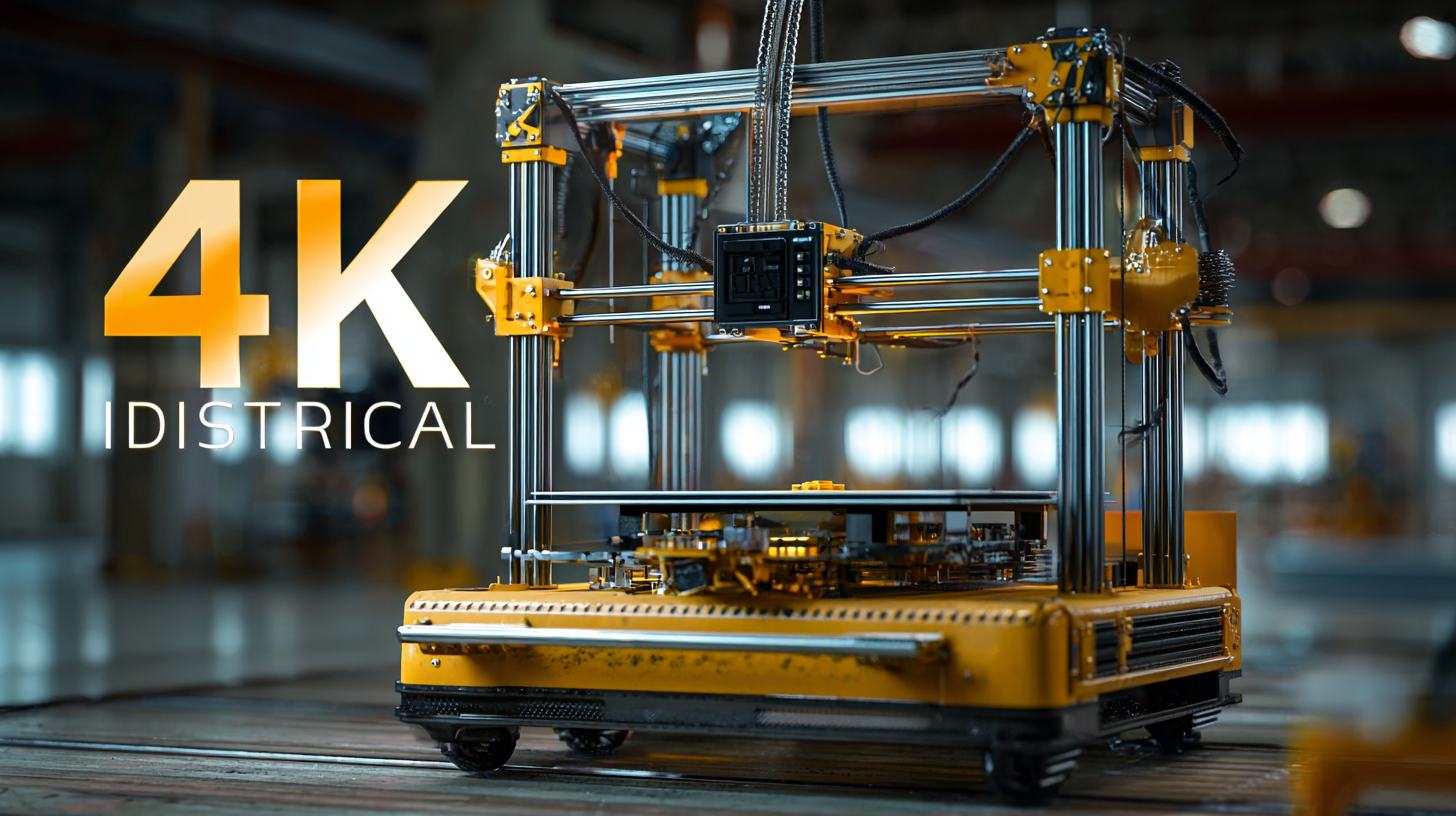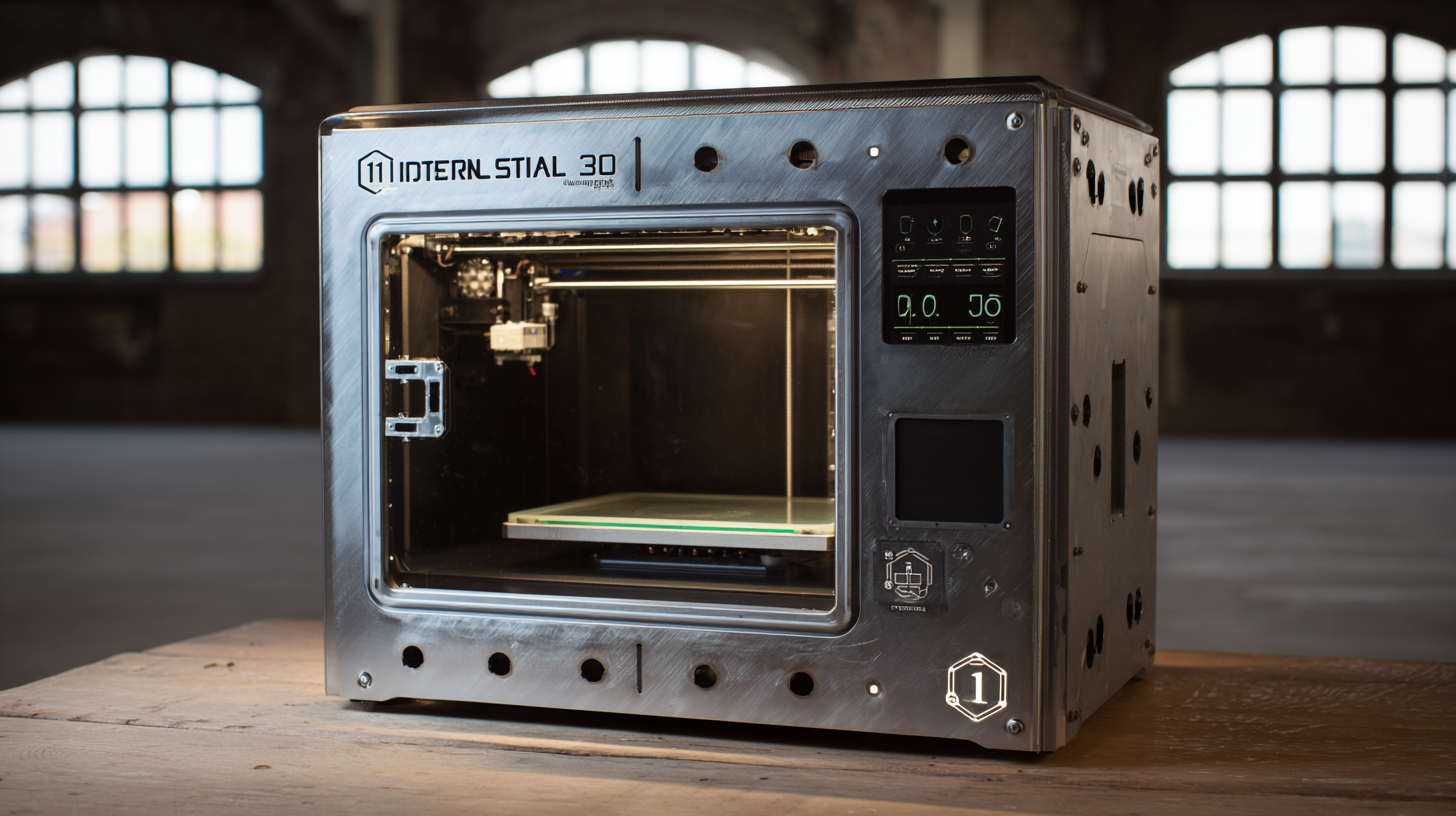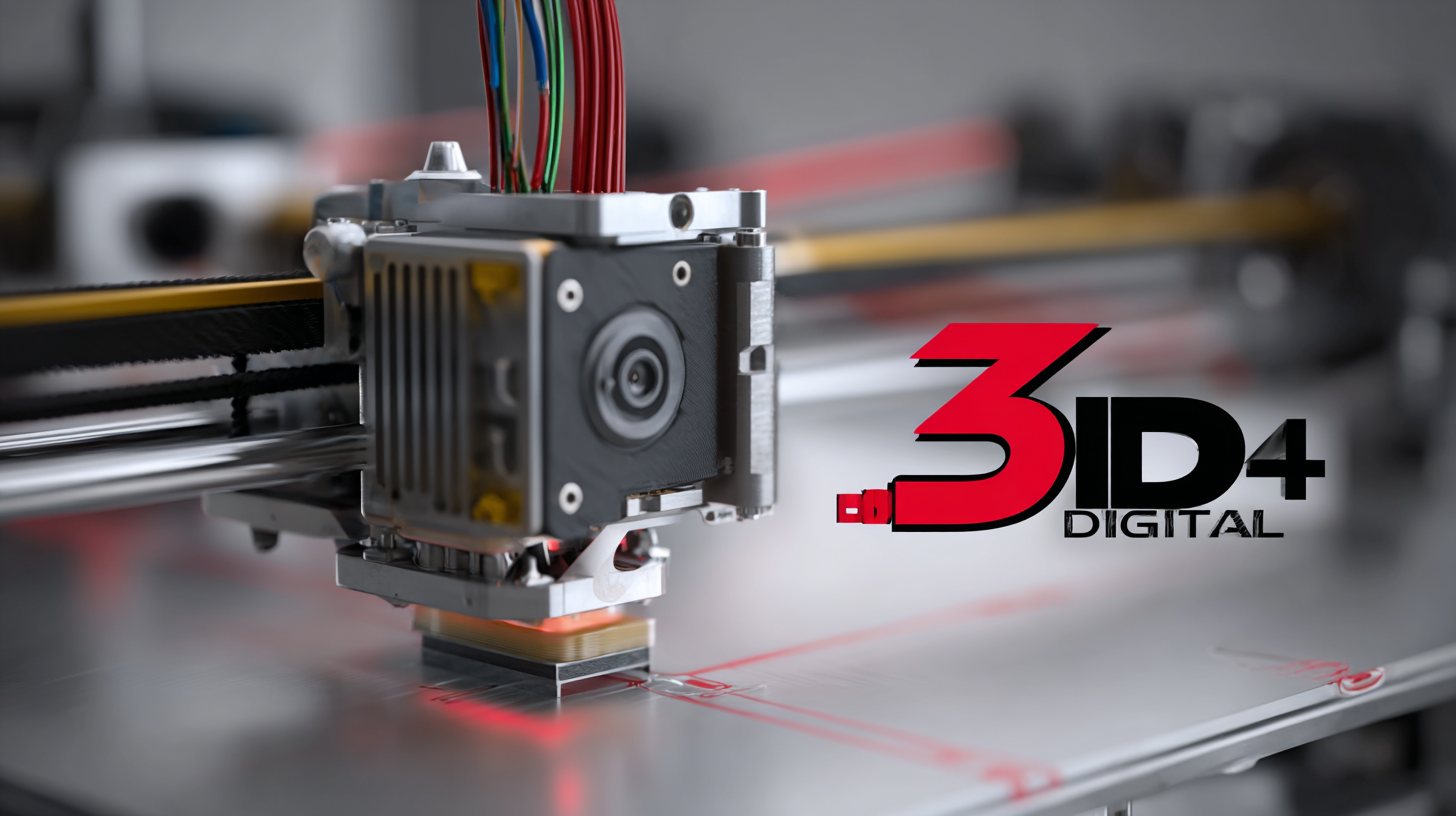Digital Insights and Tips for Choosing the Best Industrial 3D Printer
In recent years, the landscape of manufacturing has been profoundly transformed by the adoption of advanced technologies, particularly industrial 3D printers. According to a report by MarketsandMarkets, the global 3D printing market is expected to reach $34.8 billion by 2024, growing at a CAGR of 25.76%. This surge in demand highlights the increasing reliance on industrial 3D printers for their ability to produce complex geometries, reduce material waste, and expedite prototyping processes.
As China continues to solidify its position as a manufacturing powerhouse, the integration of these cutting-edge printers has enabled local factories to not only meet domestic needs but also fulfill international export demands. In this blog, we will explore key insights and practical tips for selecting the best industrial 3D printer to enhance productivity and maintain competitiveness in the global marketplace.

Common Challenges in Selecting an Industrial 3D Printer: A Comprehensive Overview
When selecting the best industrial 3D printer, several common challenges arise that manufacturers must navigate. The diversity of technologies—such as SLA and DLP—implies a steep learning curve for businesses unfamiliar with the nuances of additive manufacturing. Many organizations are also grappling with the implications of transitioning toward a digital production model, which can seem daunting amidst rapid technological advances and market fluctuations. Recent studies indicate that the global 3D printing market size is projected to reach a staggering $70 billion by 2027, illustrating the importance of making informed investments.
To tackle these challenges effectively, consider employing a few essential tips. First, conduct thorough research into the specific requirements of your projects and the capabilities of different printers. This can help eliminate options that do not align with your operational needs. Additionally, evaluate the long-term support and materials compatibility offered by the manufacturer, as these factors significantly impact the printer's performance and your production capabilities. Keeping an eye on emerging technologies and market trends will also position your business for future adaptations in this evolving landscape.
Key Technical Specifications to Consider When Choosing an Industrial 3D Printer
When selecting an industrial 3D printer, it's crucial to focus on key technical specifications that directly affect production efficiency and output quality. One of the most important specifications is the layer resolution, which determines the level of detail achievable in printed parts. According to a report by Wohlers Associates, high-end industrial 3D printers typically offer layer resolutions ranging from 20 to 100 microns, allowing manufacturers to produce intricate geometries and fine surface finishes essential for industries such as aerospace and medical devices.
Another critical factor is build volume, which refers to the maximum size of the object that can be printed. A study by Research and Markets indicates that the demand for larger build volumes is surging, with companies seeking to manufacture larger and more complex components in a single print run. Many industrial 3D printers currently on the market provide build volumes exceeding 1 cubic meter, which enhances operational efficiency and reduces the need for assembly in multi-part applications.
Finally, material compatibility is a vital consideration when choosing an industrial 3D printer. Different printers support various materials, including metals, plastics, and ceramics, impacting the final product's performance characteristics. The same report from Wohlers Associates highlights the growing importance of printers that can work with advanced materials, such as carbon fiber-reinforced plastics, as these materials offer superior strength-to-weight ratios, crucial for competitive manufacturing in sectors like automotive and aerospace engineering.
Comparison of Key Specifications for Industrial 3D Printers
The Impact of Material Compatibility on Your Industrial 3D Printing Success
When selecting an industrial 3D printer, material compatibility plays a pivotal role in ensuring successful outcomes. The advancements in 3D printing technology have led to the development of printers that can accommodate a diverse array of materials, significantly broadening application opportunities. For instance, key developments in large-format masked stereolithography (mSLA) have introduced printers that enhance both speed and accuracy, crucial for large-scale production. This capability enables industries to utilize high-performance resins tailored for various applications, such as electronics and medical devices.
Moreover, innovations such as specialized printheads are making it possible to print with pastes and liquids like silicone, opening doors to new manufacturing possibilities. These enhancements not only expand material compatibility but also improve the efficiency and reliability of the printing process. As the market continues to evolve, understanding the compatibility of materials with selected printers is essential for achieving desired results and unlocking advanced applications across multiple sectors. Choosing a printer that meets these requirements is crucial for maximizing the potential of industrial 3D printing.

Cost Analysis: Understanding the Total Cost of Ownership for Industrial 3D Printers
The total cost of ownership (TCO) for industrial 3D printers is a critical factor for businesses looking to invest in additive manufacturing. As the industry evolves, understanding this cost becomes vital. Reports indicate that the global market for industrial 3D printers was valued at approximately $15.1 billion in 2022, with expectations of exceeding a compound annual growth rate (CAGR) of 15% from 2023 to 2032. This growth is driven by the need to reduce manufacturing costs and minimize downtime, making it essential for organizations to evaluate not only the initial purchase price but also ongoing operational expenses related to materials, maintenance, and software.
As applications for 3D printing expand across various sectors—including healthcare, automotive, aerospace, and construction—companies must consider the specific needs of their industries. For instance, the materials and services involved in these applications can significantly influence the TCO. A thorough cost analysis should encompass not just hardware expenses, but also software licensing, service agreements, and the cost of high-quality materials. By analyzing these factors, organizations can make informed decisions when selecting the best industrial 3D printer that aligns with their operational goals and budget constraints.
Expert Recommendations for Evaluating Print Quality and Reliability in 3D Printing
When selecting an industrial 3D printer, evaluating print quality and reliability is crucial. Print quality can determine the success of your projects, making it essential to consider several factors. One tip is to assess the printer's resolution capabilities. Look for printers that offer high-resolution outputs, as they provide finer details which are imperative for complex designs. Additionally, review samples of printed materials to compare how different printers handle intricate geometries and surface finishes.

In addition to print quality, reliability is a paramount concern. A reliable 3D printer should consistently produce high-quality outputs without frequent breakdowns. To gauge a printer's reliability, consult customer reviews and expert testimonials. Consider printers from reputable manufacturers known for their durable construction and after-sales support. Regular maintenance practices can further enhance reliability; establish a routine for cleaning and calibrating the printer to ensure optimal performance. Investing time in evaluating these aspects will lead to wiser purchasing decisions and greater satisfaction with your industrial 3D printing endeavors.